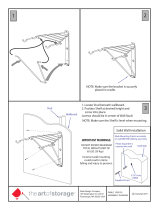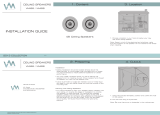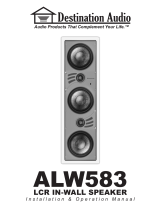Knoll SE650 is a high-quality in-ceiling speaker designed to provide an immersive and enjoyable audio experience. With its versatile design, the speaker can be used in a wide range of applications, from home theaters to commercial spaces. The SE650 features a dual-voice coil design that allows for single-point stereo sound, making it ideal for hallways and other areas where separate stereo speakers are not suitable. The speaker's paintable grill and flange allow it to blend seamlessly with any décor, and the included paint shield protects the drivers during painting.
Knoll SE650 is a high-quality in-ceiling speaker designed to provide an immersive and enjoyable audio experience. With its versatile design, the speaker can be used in a wide range of applications, from home theaters to commercial spaces. The SE650 features a dual-voice coil design that allows for single-point stereo sound, making it ideal for hallways and other areas where separate stereo speakers are not suitable. The speaker's paintable grill and flange allow it to blend seamlessly with any décor, and the included paint shield protects the drivers during painting.




-
 1
1
-
 2
2
-
 3
3
-
 4
4
Knoll SE650 User manual
- Category
- Car speakers
- Type
- User manual
Knoll SE650 is a high-quality in-ceiling speaker designed to provide an immersive and enjoyable audio experience. With its versatile design, the speaker can be used in a wide range of applications, from home theaters to commercial spaces. The SE650 features a dual-voice coil design that allows for single-point stereo sound, making it ideal for hallways and other areas where separate stereo speakers are not suitable. The speaker's paintable grill and flange allow it to blend seamlessly with any décor, and the included paint shield protects the drivers during painting.
Ask a question and I''ll find the answer in the document
Finding information in a document is now easier with AI
Related papers
Other documents
-
Pure Acoustics BQ 450 User manual
-
 The Art of Storage RS5103 Operating instructions
The Art of Storage RS5103 Operating instructions
-
 VM Audio VMiS6 Installation guide
VM Audio VMiS6 Installation guide
-
 Destination Audio ALW583 Installation & Operation Manual
Destination Audio ALW583 Installation & Operation Manual
-
Rockville ROCKSHELF 68C V2 Owner's manual
-
 ADS Technologies HT80ic User manual
ADS Technologies HT80ic User manual
-
Jamo 883K4 User manual
-
Directed Electronics HT80ic User manual
-
OSD Audio Black Series BK-R62EZ 6.5" 2-Way In-Ceiling Speaker Owner's manual
-
Massive Audio CARBON 6 User manual







